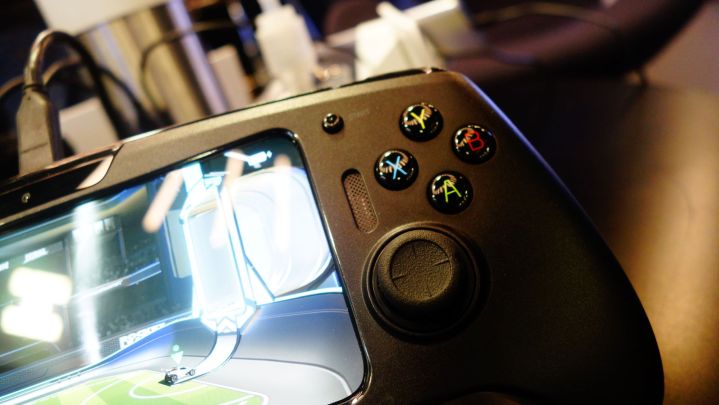Back in December, Qualcomm revealed its foray into the world of game consoles — sort of. The Snapdragon G3x was a traditional handheld gaming system built with cloud and mobile gaming in mind. There was just one catch: You couldn’t actually buy it. The device, made in collaboration with Razer, was only available for developers to toy around with.
So naturally, it was on full display at Qualcomm’s booth at this year’s Game Developers Conference, where I got to take it for a test drive. While I walked away still skeptical about the necessity of a cloud handheld, I did find myself wishing that other hardware manufacturers would take note of its comfortable design.
The right fit
The Snapdragon G3x immediately impressed me when I walked into Qualcomm’s booth. Its 6.65-inch OLED screen beamed out vibrant colors that caught my eye even from afar. The screen size differs from the Switch OLED’s display, but the image quality is comparable. Where the Snapdragon G3x gets the edge is in refresh rate, as it’s capable of hitting 120Hz.

The machine I picked up was running a mobile racing game, but I didn’t realize that initially. I figured I was playing some console driving game that was running off the cloud — that’s how good the screen is. Incredibly smooth performance and top-notch visuals made it clear that the device could really squeeze every drop of power out of a high-end mobile game like Call of Duty Mobile or Fantasian.
That part wasn’t surprising, but I was taken aback by how natural the device felt in my hands. It’s a lightweight handheld where just about every button feels like it’s in the right place. The gamepad feels closely related to Razer’s Kishi, which makes sense considering that the company helped create the Snapdragon G3x. The only thing that felt slightly off was the dynamic of triggers and bumpers, as I found myself needing to reposition my palms to switch between the two (a common issue I’ve noticed with handheld devices as of late).
The biggest revelation of all? Grips. That probably sounds completely mundane to anyone who uses a controller, but consider that grips have never been the standard for handhelds. Not a single one of Nintendo’s handheld systems, from the Game Boy all the way to the Switch, has grips. PSP, N-Gage, Kishi, Steam Deck — all of them opt for rounded corners.
I’d never realized that before until holding the Snapdragon G3x. It just sits better in my hands than perhaps any handheld gaming device I’ve used. The grips provide a natural fit and make it feel as though I’m holding a proper gamepad with guts inside.

In that sense, I get what Qualcomm is going for here. While the idea of buying a new device for games that you can play on the ones you already own doesn’t make much sense, the use case is clear here. Serious mobile gamers might find themselves investing in peripherals to make their phone feel like a proper console. Controllers, clips, battery packs, and more all add up. The Snapdragon G3x would theoretically remove the need for all that extra work needed to transform your phone into a different device.
Still, the audience for it seems narrow, which is why the device makes more sense as a developer kit for now. It would need to launch at a low price point — even lower than the Switch, perhaps — for the numbers to add up. With that caveat in mind, the Snapdragon G3x certainly looks and feels the part. Perhaps Razer and Qualcomm could loan the screen and design out to Valve to make the Steam Deck 2 into a true powerhouse.



